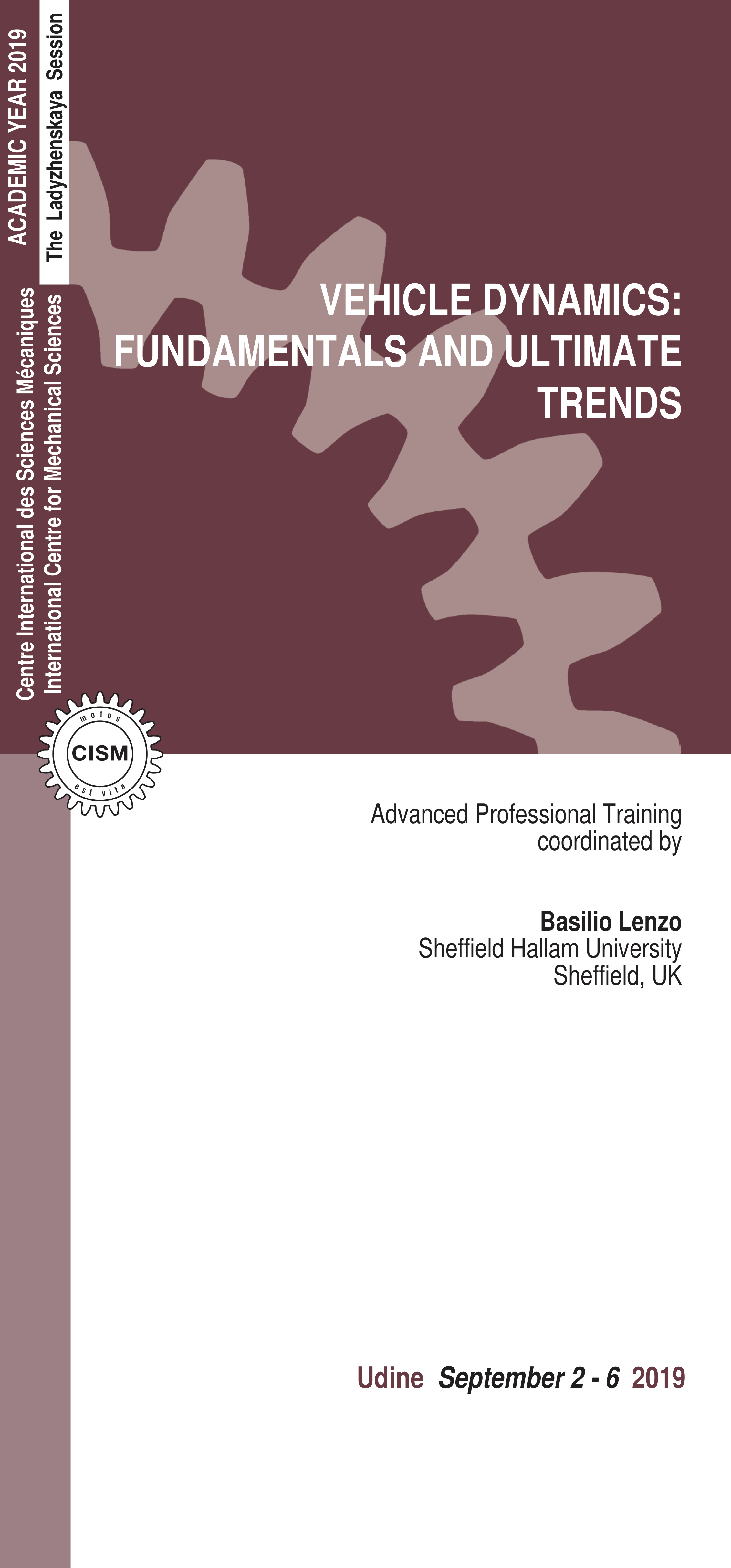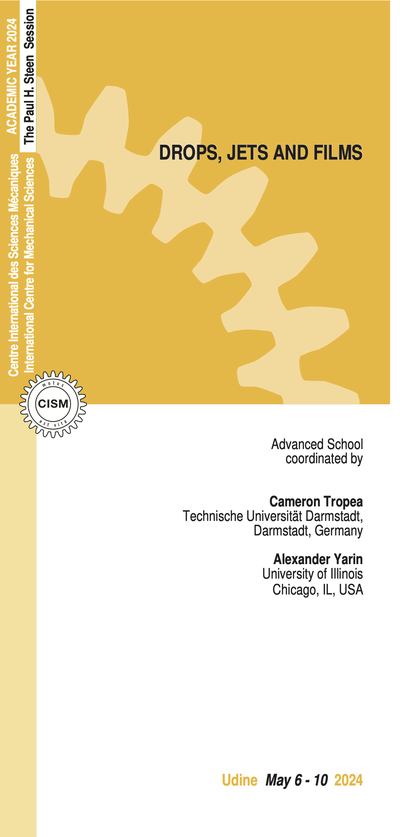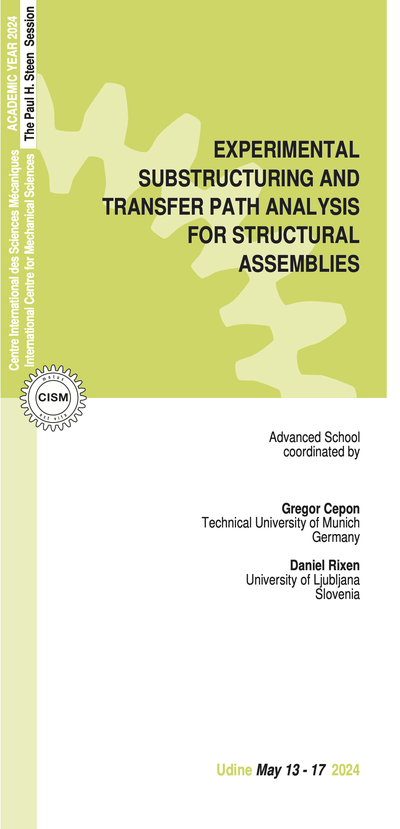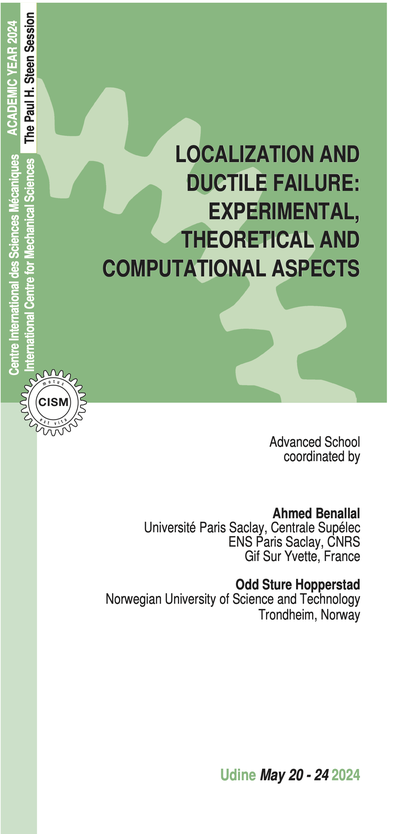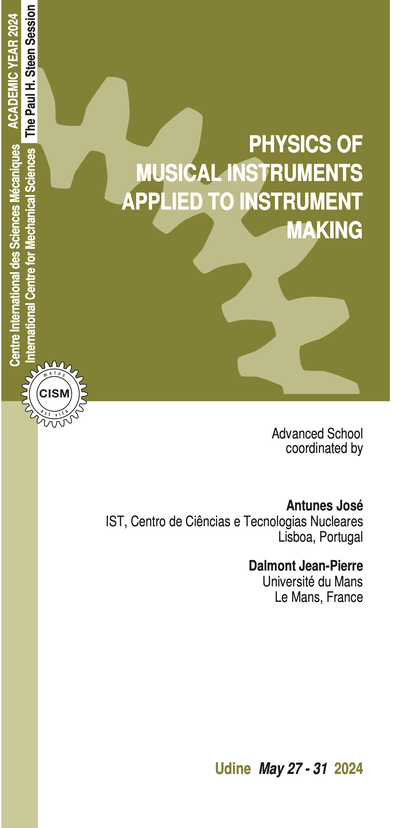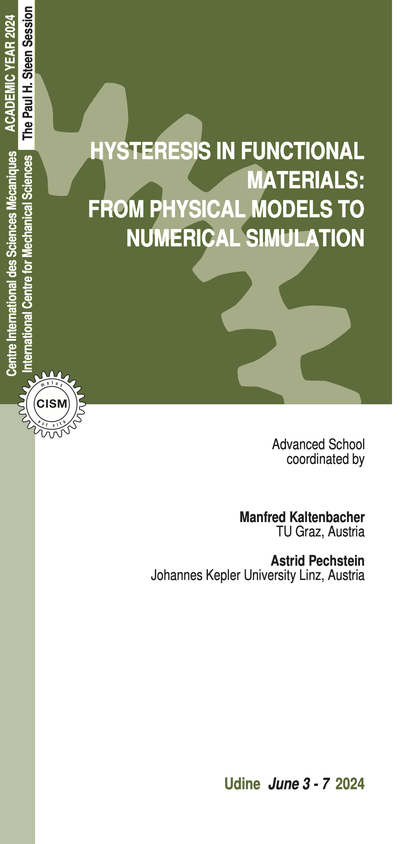Since the invention of the world's first motor vehicle, more than 100 years ago, automobiles have been widely accepted in our society with the progress of modern industry. The study and understanding of vehicle dynamics has always played a crucial role in the design of vehicles, with the aim of guaranteeing safety and stability as well as good performance. The recent advent of electric vehicles and the future perspective of widespread autonomous cars have posed further interesting challenges for the vehicle dynamicist, both in industry and academia. Nonetheless, the importance of the basics should never be underestimated - after all, essentially a vehicle behavior is described by second Newton's law, F=ma.
Therefore, the aim of this course is to recall the fundamentals of vehicle dynamics, as well as to present and discuss the state-of-the-art of ultimate trends in the field, including torque vectoring control, vehicle parameter estimation, and autonomous vehicles. The 6 lecturers include 2 eminent academics, 2 experienced researchers, and 2 industrial representatives.
The course will begin with a discussion of vehicle dynamics fundamentals. It will introduce classic hypotheses of vehicle dynamics theory, vehicle models for handling and performance, with a critical and often questioning approach. The handling of road cars will be also covered, with particular attention to the handling diagram and to the critical analysis of classical concepts such as understeer and oversteer. Since the vehicle performance and cornering depends strongly on the basic geometric properties of roads and suspensions, the lectures will then focus on suspension kinematics and compliance, engineering and measurement, as well as steering design and development. Another aspect of paramount importance which will be discussed is tire modeling and testing. Indeed tires allow the generation of the contact forces which rule the vehicle dynamics. A good representation of tire behavior is therefore a necessity, but is not a simple task. Furthermore, often thermal effects have a significant impact on tire behavior.
The second part of the course, dedicated to ultimate trends, will begin with the discussion of a relatively recent technology: torque vectoring, i.e. the ability to allocate desired amounts of torque to specific axles/wheels of a vehicle, aimed at the enhancement of vehicle safety and handling qualities, as well as battery life. Advanced vehicle control techniques, including torque vectoring, may require parameters such as tire-road friction coefficient or vehicle sideslip angle, which are difficult to obtain. Hence the lectures will discuss advanced techniques for their estimation. The last part of the course will be devoted to the autonomous driving. As well-known, advances in computational capabilities, communication architectures, as well as sensing and navigation devices have led to the development of autonomous vehicles with increasing level of automation. They must be able to construct a proper representation of the environment and of their own state, and to make timely decisions in order to act with the external environment in an optimal and safe way.
M. Guiggiani, The Science of Vehicle Dynamics, 2nd edition, Springer, 2018.
W. F. Milliken et al., Chassis Design: Principles and Analysis, SAE Inti, 2002.
T. D. Gillespie, Fundamentals of Vehicle Dynamics, SAE Inti, 1992.
R.T. Bundorf, R.L. Leffert, The Cornering Compliance Concept for Description of Vehicle Directional Control Properties, SAE Paper 760713, 1976.
W. F. Milliken, D. L. Milliken, Race Car Vehicle Dynamics, SAE, 1995.
B. Lenzo et al., On the experimental analysis of single input single output control of yaw rate and sideslip angle, Internat. Journal of Automotive Tech., 18:5, 2017.
B. Lenzo et al., Torque Distribution Strategies for Energy-Efficient Electric Vehicles with Multiple Drivetrains, ASME Journal of Dynamic Systems, Meas. and Control, 139:12, 2017.
F. Farroni et al., TRT: Thermo racing tyre a physical model to predict the tyre temperature distribution, Meccanica, 49 (3), 2014.
F. Farroni, et al., An evolved version of thermo racing tyre for real time applications, Lecture Notes in Engineering and Computer Science, 2218, 2015.
D. Simon, Optimal State Estimation: Kalman, H Infinity and Nonlinear Approach, John Wiley & Sons, 2006. http://cs231n.github.io/ (online material from Stanford course)
F. Naets et al., Design and Experimental Validation of a Stable Two-Stage Estimator for Automotive Sideslip Angle and Tire Parameters. IEEE Trans. on Vehicular Tech., 66 (11), 2017.
R. Rajamani, Vehicle dynamics and control, Springer, 2006.
Ulosy et al., Automotive Control Systems, Cambridge University Press, 2012.
K. Oh, et al., Functional perspective-based probabilistic fault detection and diagnostic algorithm for autonomous vehicle using longitudinal kinematic model, Microsystem Technologies, 1-11, 2018.
K. Kim, et al., Design of Integrated Risk Management-Based Dynamic Driving Control of Automated Vehicles, IEEE ITS Magazine 9 (1), 2017.
6 lectures on: Vehicle dynamics basics and classic hypotheses; Vehicle kinematics; Vehicle models for handling and performance; Handling of road cars, understeer/oversteer and handling diagram.
5 lectures on: Torque vectoring basics; State-of-the-art torque vectoring strategies for the design of the vehicle cornering response and the enhancement of safety; State-of-the-art torque vectoring strategies for the minimization of energy consumption.
6 lectures on: The Wheel End Free Body Diagram and Wheel End Architecture; Suspension Kinematics; Suspension Compliance; Weight Transfer and Cornering with Kinematics and Compliance; The Steering sub-System; The Relationship between weight transfer, K and C and Tire Utilization.
6 lectures on: Classical estimators and observers for vehicle systems (different forms of Kalman filtering, alternative approaches); Machine learning based observers for vehicle systems; State-of-the-art on dynamic vehicle estimators; State-of-the-art on vehicle tire estimation, including tire model selection and observability of different parameters.
6 lectures on: Levels of automation, current challenges; State-of-the art on perception; State-of-the-art on decision and motion planning/control.
6 lectures on: Tire road contact and interactions, tire mechanics; Tire modeling and testing, physical and empirical modeling, testing for tire parameter identification; Thermal analysis of tire behavior, tire thermal models, temperature influence on grip.
The registration fee is 600.00 Euro + VAT*, where applicable (bank charges are not included). The registration fee includes a complimentary bag, four fixed menu buffet lunches (on Friday upon request), hot beverages, downloadable lecture notes and wi-fi internet access.
Applicants must apply at least one month before the beginning of the course. Application forms should be sent on-line through the following web site: http://www.cism.it. A message of confirmation will be sent to accepted participants. Applicants requiring assistance with the registration should contact the secretariat at the following email address cism@cism.it.
Applicants may cancel their course registration and receive a full refund by notifying CISM Secretariat in writing (by email to cism@cism.it) no later than two weeks prior to the start of the course.
Cancellation requests received during the two weeks prior to the start of the course will be charged a 50.00 Euro handling fee. Incorrect payments are also subject to a 50.00 Euro handling fee.
A limited number of participants from universities and research centres who are not supported by their own institutions can be offered lodging and/or board, if available, in a reasonably priced hotel or student guest house.
Requests should be sent to CISM Secretariat by July 2, 2019 along with the applicant's curriculum and a letter of recommendation by the head of the department or a supervisor confirming that the institute cannot provide funding. Preference will be given to applicants from countries that sponsor CISM.
Information about travel and accommodation is available on the web site www.cism.it, or can be mailed upon request.
* Italian VAT is 22%.
